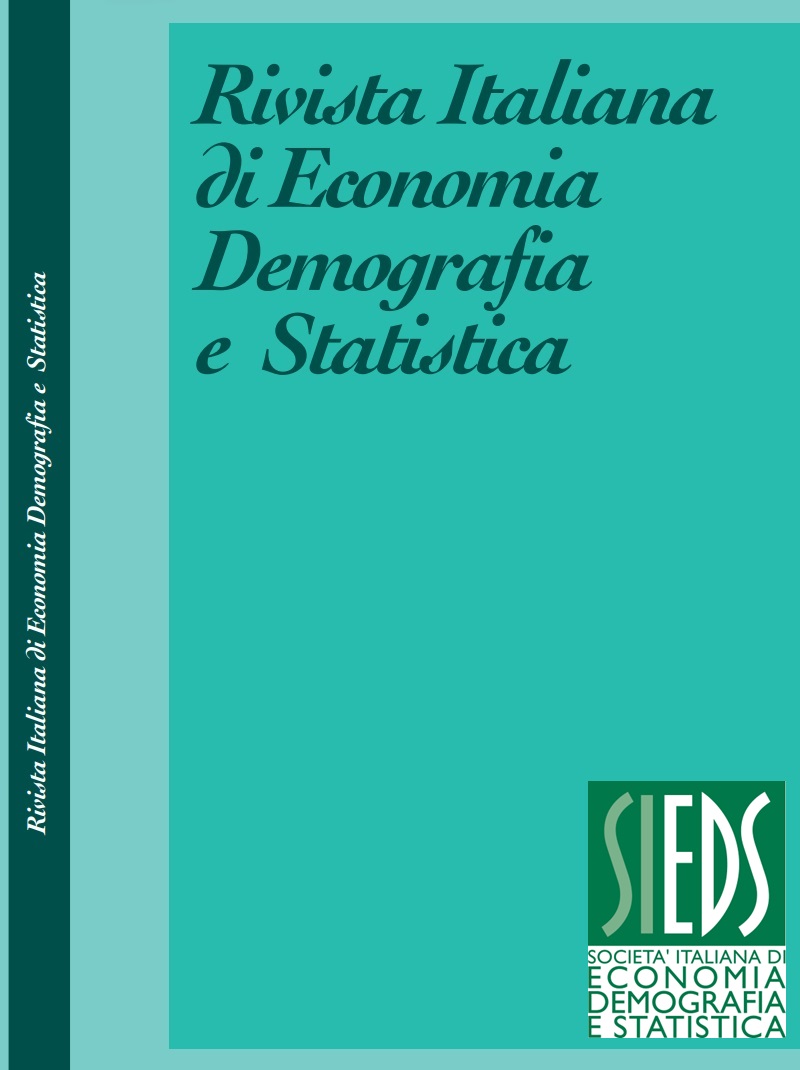Population aging and retirement in Italy: an analysis by gender and geographic areas
Abstract
Over the last decades, the increase in the share of the elderly people who exit the labour market thus receiving a work pension and the concurrent reduction in the workforce, has raised questions on the stability of the financial system of ageing countries. Our study focuses on Italy and investigates the portion of elderly who are not in receipt of any retirement income or of other types of economic revenues, thus representing a potential burden for the whole society. We carry out an analysis by age, gender, and geographic area using INPS (National Social Security Institute) and ISTAT (Institute for National Statistics) data. The former allows the identification not only of persons who receive a pension but also their province of residence, their individual characteristics, and retirement features. The second provides information on the resident population by age, gender, and geographic area. We select people aged 65 and over and consider two time points, i.e., 1995 and 2020. A multiple regression model is employed to investigate the association between retired people by pension type and their burden on the elderly population. Results show that the old population structure significantly changed between 1995 and 2020 and confirm that demographic evolution has developed in relation to the economic development of the different Italian broad zones. Indeed, differences by gender and geographic area are detected: the share of men receiving a work pension is still higher than that of women, and this gap is more pronounced in the South compared with the North.
Downloads
Published
Issue
Section
License
Copyright (c) 2021 Cecilia Reynaud, Maria Herica La Valle

This work is licensed under a Creative Commons Attribution 4.0 International License.



